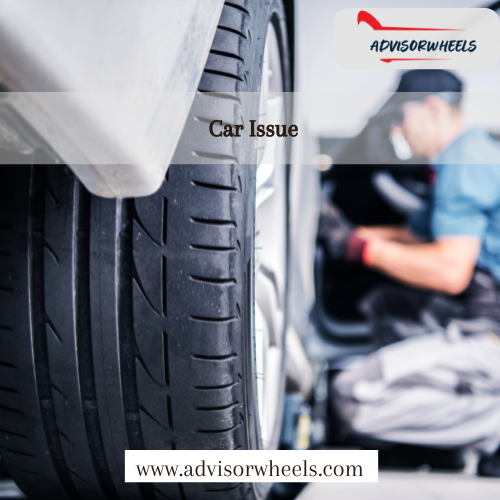The ownership of car is associated with a lot of challenges, including car problems that can derail your daily life and make you endure the inconvenience of being stranded or spending a lot of money in repairing the car. Whether it is a small annoyance or a big failure, it is important to be familiar with the most common issues affecting your vehicle to make it reliable and safe. Aside from other car problems that drivers face, the ones involving the battery are the most prevalent regardless of the make and model of one car or another. This book is an attempt to understand the reason as to why these battery problems have been so common, how the batteries can be fixed and covered other frequent problems of automobiles such as, shaking and seat expiration, window tinting and car wraps to provide a broader scope on vehicle care.
The Most Common Car Issue: Battery Problems
Automobile repair statistics, such as those published by AAA, show battery-related problems result in a large amount of roadside assistance requests–causing 30-40 percent of requests most years. It is the reason it is the most frequently reported car problem by drivers. A failing or dead battery may inhibit the starting process leaving you stranded and in a bad mood. Because batteries are needed to power important systems, such as the starter motor, lights, and electronics, they can stall your vehicle out when they die.
Why Battery Issues Are So Common
There are a number of causes of battery failure. Batteries work best until they reach their expiry date that is approximately 3-5 years. Extreme climate: Extreme weather like the hot summer or even extremely cold winters will compromise the battery performance. Another source of battery drain can be resulting from leaving the lights or faulty electrical component off. Moreover, bad maintenance such as rusty terminals or wires, and loose connections debilitates the battery performance. Neglecting such problems can cause more than just an inconvenience, as they may cause the overloading of such components as the alternator which then requires repairs that can be expensive.
Diagnosing Battery-Related Car Issues
Being familiar with battery warning signs can help in both time and money saved. Typical ones involve idling too slowly, or having troubles starting the engine, dim headlights or interior light, dashboard warning lights (such as battery or check engine light) and clicking sounds as the key is turned.
DIY Diagnostic Steps
Minor tests can be done at home with little equipment. Start by a visual examinationлось look at whether there is a corrosion (white, powdery deposit) on battery terminals or loose cables. Then read the voltage of the battery (should be about 12.6V with the engine off and between 13.7-14.7V with an engine running) with a multimeter. Auto parts stores also provide free battery load checking to determine the battery under stress. These tests may determine a fault or the symptoms do not disappear replace the related equipment like alternator or starter.
Solutions and Prevention for Battery Issues
Addressing battery problems promptly can prevent breakdowns. Here are practical solutions and maintenance strategies.
Immediate Fixes
When your battery is dead, a safe jump-start can get you back in business. You connect one end of red cable in the positive terminal of the dead battery, and connect the other end of the red cable in the positive terminal of the working battery. Then attach the negative (black) cable to the negative post on working battery and subsequently to an unpainted metal on the dead vehicle. Connect the working car, dead car and disconnect in the reverse order. Alternatively: clean up battery terminals with a wire brush and standardized sodium bicarbonate and this way eliminate the corrosion.
Long-Term Maintenance
Frequent servicing increases the life of the batteries Make sure your battery is checked during normal servicing, like oil changes. Change out batteries on 3-5 year cycle based on performance and climate. Make sure the alternator and the voltage regulator are working to maintain a battery charge.
Prevention Tips
Consider keeping short trips to the minimum in order to ensure that the battery charges fully. Turn the radio, lights, etc off when the engine is off. Park your car in an enclosed garage or the shady place to minimize temperature pressure on the battery. When the battery is going to be replaced, ensure that the one purchased is of the right size with the right cold cranking amps (CCA), and it should maintain the right brand.
Other Common Car Issues to Watch For
While battery problems are the most prevalent, other car issues can impact your vehicle’s performance and safety. Here’s a look at a few notable ones.
Car Shaking
When your car shakes or vibrates, and particularly at specific velocities or whenever you brake, this may point at tires that are not balanced properly or are worn out, brake issues (rotors that are warped, etc.), or suspension and alignment issues. Routine maintenance of brakes and suspension parts and regular balancing and rotation of tires (5,000-7,500 miles) can resolve these problems. Also read Why Is My Car Shaking? 5 Common Causes You Need to Know
Seat Expiration
Child safety seats have an expiration date period between 6 and 10 years since manufacture, because of wear and tear on the material as well as changes in safety standards. An expired seat is not considered to offer sufficient protection in a crash. Make sure that the expiration date, typically printed on the seat or in the manual, has not passed by and get rid of expired seats. Manufactures instructions should be carefully followed in installations and usage. Also read When Does Your Car Seat Expire? A Guide to Staying Safe
Window Tinting Issues
A window tint that has been incorrectly applied or one past its shelf life can bubble, peel, or be illegal, obscuring visibility and appearance. Have a professional install the tints so that they do not exceed local legislations such as visible light transmission requirements. Don tints that are damaged need to be replaced on time in order to ensure safety and aesthetics. Also read How Much Does Car Window Tinting Really Cost?
Car Wrap Problems
Wrap car, which may have aesthetic or advertisement purposes, may be faded, peeled, or damaged in case of improper servicing. They have a short life expectancy when their installation is poor or when subjected to harsh conditions. Select quality vinyl wraps and professional installation, then clean wraps regularly using mild soap, but be sure to avoid abrasive cleansers so as to increase the number of years in which these can be utilized. Also read How to Budget for a Car Wrap: Prices and Tips
Proactive Maintenance to Avoid Car Issues
In addition to the maintenance of battery, the regular vehicle maintenance is a must. Inspect your vehicle every 6 months depending on your car manual. Maintain tire rotation, braking checks and top-off fluid. When strange sounds or performance shifts occur, treat warning signs by addressing them as soon as possible to avoid blow ups.
Conclusion
Car battery issues are the number one car problem that affects all types of car drivers because they are prone to wearing out or getting damaged by weather factors, as well as the negligence of this car part. It is also important to familiarize yourself with the indicators, execute routine preventative care, and fix problems as they arise in order to ensure your car maintains its reliability and you do not have to pay the high costs of repairs. Besides, being alert of other issues such as shaking, expired car seats, window tinting and car wrap care guarantees that your car looks good and stays safe. Make a routine battery check, maintain your car adhering to the service guidelines, and have a technician find solutions to recurrent problems, and you are on your way to traveling with some peace of mind.


